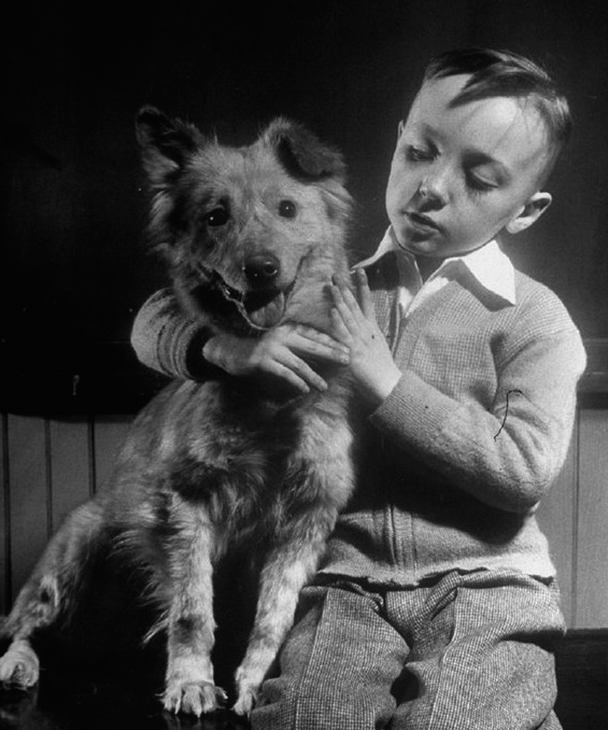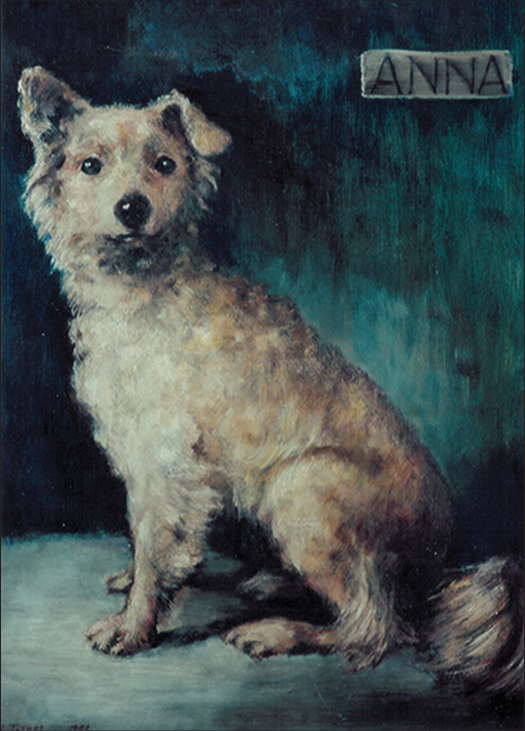Translate this page into:
Anna: The Dog Who Set the Ball Rolling for the Blue Baby Operation
*Corresponding author: Doniparthi Pradeep, Department of Cardiothoracic and Vascular Surgery, Fortis Escorts Heart Institute, New Delhi, India. pradeepdhoni023.pd@gmail.com
-
Received: ,
Accepted: ,
How to cite this article: Pradeep D, Malakar J. Anna: The Dog Who Set the Ball Rolling for the Blue Baby Operation. J Card Crit Care TSS. 2025;9:52-4. doi: 10.25259/JCCC_3_2024
Abstract
The practice of cardiac surgery has been greatly influenced by numerous notable figures throughout history. However, animal experiments have also played a crucial role in understanding the anatomy and physiology necessary for successful surgical interventions in humans. This is the author’s meek effort to hark back to the contributions of a dog who paved the route for the blue baby operation.
Keywords
Notable figures
Blue baby operation
Cardiac surgery
INTRODUCTION
Historical archives indicate that animal experiments for medical research date back to the time of Aristotle.[1] In the realm of cardiac surgery, the first Blalock–Taussig shunt in 1946 at Johns Hopkins Hospital is a significant milestone. Dr. Alfred Blalock, Dr. Helen Taussig, and Dr. Vivien Thomas are well known for their work on the blue baby operation. However, preliminary experiments were also performed on a mongrel dog named Anna, in addition to the aforementioned trio.
CASE REPORT
In the early 1940s, Dr. Blalock and Dr. Vivien Thomas created an animal model to alleviate the cyanosis associated with Fallot’s tetralogy. When Dr. Blalock was busy with his surgical practice and busy administrative duties, Dr. Thomas put in persistent efforts in experiments to create a model in 200 dogs to mimic this congenital defect. Dr. Thomas was neither a veterinary surgeon nor trained under veterinary surgeons. Once he was able to create an animal model simulating the pathophysiology of cyanosis, he ventured into designing a surgery on one of these affected dogs to witness whether the repair they had devised would correct the blood flow that was lethal to blue babies.
Anna was the first dog to survive the surgical simulation of Fallot’s tetralogy and the corrective shunt procedure, later known as the Blalock–Taussig shunt. She became the formal mascot of the blue baby procedure after the unprecedented success of the operation. Anna was retired from experiments and lived in the surgical laboratory as a pet, beloved by staff and visitors alike.
At the time, there was a vocal anti-vivisection campaign by groups such as Mercy Crusade, Tail-Wagger’s Foundation, and Animal Allies in Baltimore. These groups were intensely against animal experiments and put a stalemate on research that used any stray dogs caught in the state of Maryland.[2] Hospital research laboratories began importing stray dogs from neighboring states to overcome this prohibition. Doctors boycotted the idea that modern advances were only attainable with animal experiments and were crucial to medical progress. When the situation reached a crisis, city authorities decided to put the matter to a public poll. The vote was nicknamed “The Dog Referendum” and took place in November 1950, just after the 1000th blue baby operation of Dr. Blalock and Dr. Thomas. Helen Taussig attended a public gathering with several little patients and their pet dogs and emphasized that the children’s lifesaving surgery was only practicable because of earlier research on dogs. The state’s dentists also supported vivisection. The anti-vivisectionists were challenged to choose between the healthy, happy child (once a blue baby) who was present and a mongrel stray. The Dog Referendum unquestionably ignited local passions, and more than 200,000 citizens polled the vote. In the end, the pro-vivisection camp won by a margin of 4–1 (163,079 votes against 38,418). Anna the dog became the celebrity of the campaign.[3,4]
Newsmen frequently photographed Anna with former blue baby patients who had survived the surgery, a touching photograph of animal service and human gratitude. One of the rare photographs of Anna with a Blue Baby Syndrome survivor Michael Schirmer [Figure 1] is a testimony to the contribution made by her in an effort to better understand the disease. Anna helped prolong Michael’s life by another 69 years and many others for decades. Anna’s life was depicted in a motion picture in 1950,[5] which has been shown to various schools and other groups. It is now the property of the Maryland Society for Medical Research.[5] The Baltimore Animal Aid Association, Baltimore Beagle Club, and Lions Club supported the humane use of laboratory animals by accrediting her photograph in 1951.[2] The portrait of Anna was painted and presented to the Johns Hopkins Hospital by the Baltimore Animal Aid Association [Figure 2]. Dr. Blalock displayed the portrait of Anna after winning the Dog Referendum, and she is the only animal whose portrait is displayed in the Library of John Hopkins.[6]

- Anna with Michael Schirmer (at the age of 5 years), a survivor of a blue baby operation. Schirmer’s life was extended to another 69 years after surgery. (Courtesy: Google).

- Portrait of Anna the Dog by DeNyse W. Turner Pinkerton, 1951. It is still displayed in the Johns Hopkins Hospital Library (Courtesy: Google).
DISCUSSION
Dr. Thomas identified the three pillars that were crucial to the development of the Blalock–Taussig shunt: Himself, Dr. Blalock, and Anna. Anna has set a benchmark example to show how animals have helped in experiments for mankind and passed away naturally in 1957. Therefore, the authors propose that Anna’s name should be inscribed in the chapter on legends in cardiac surgery, as she is a legend in her own right.
CONCLUSION
Mahatma Gandhi once noted that the compassion a nation shows toward its animals is a reflection of its greatness.
Ethical approval
Institutional Review Board approval is not required.
Declaration of patient consent
Patient’s consent is not required as there are no patients in this study.
Conflicts of interest
There are no conflicts of interest.
Use of artificial intelligence (AI)-assisted technology for manuscript preparation
The authors confirm that there was no use of artificial intelligence (AI)-assisted technology for assisting in the writing or editing of the manuscript and no images were manipulated using AI.
Financial support and sponsorship
Nil.
References
- ‘Man vs Dog: A Bioethical Trade-Off; Animal Research Reflects Our Regard for Human Life United States: Los Angeles Times; 1989.
- [Google Scholar]
- Do You Want an Unlikely Link between Heart Surgery and General Elections? OK, then, Here Goes. 2017. Available from: https://twitter.com/thomasngmorris/status/872426214350360576 [Last accessed on 2024 Jan 02]
- [Google Scholar]
- The Matter of the Heart: A History of the Heart in Eleven Operations London, England: Vintage; 2018.
- [Google Scholar]
- Her Story-Produced by Stark-Films. 1950. Available from: https://youtu.be/suNU6rkLaQU [Last accessed on 2023 Apr 30]
- [Google Scholar]
- Exhibits: Anna the Dog The John Hopkins University; Available from: https://exhibits.library.jhu.edu/exhibits/show/the-blue-baby-operation/anna-thedog#:~:text=She%20was%20the%20first%20dog,beloved%20by%20staff%20and%20visitors [Last accessed on 2023 Apr 30]
- [Google Scholar]






